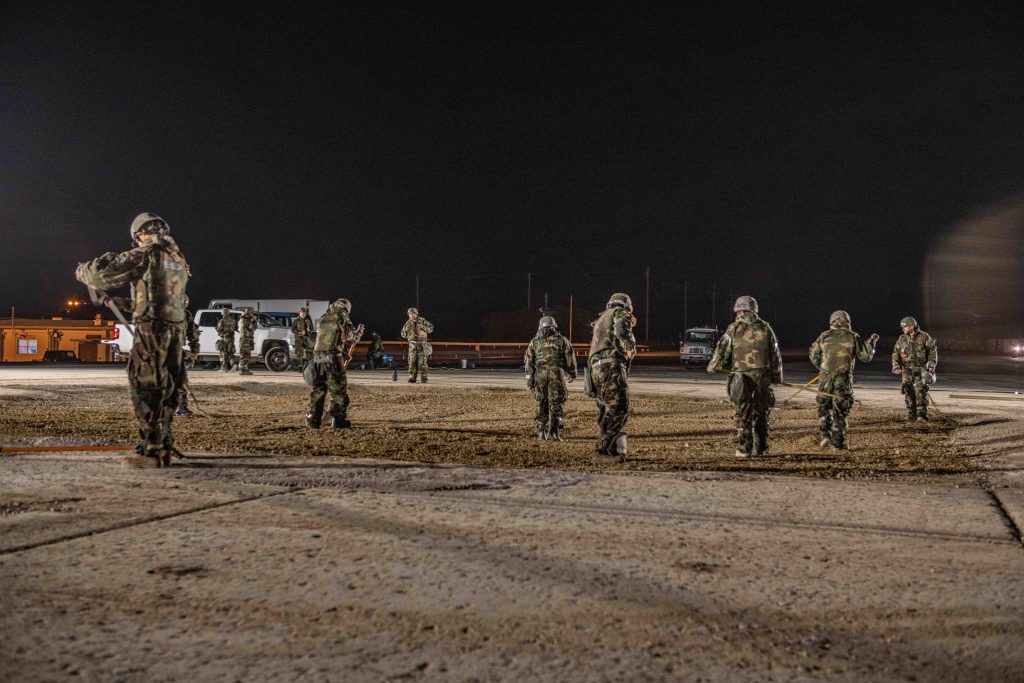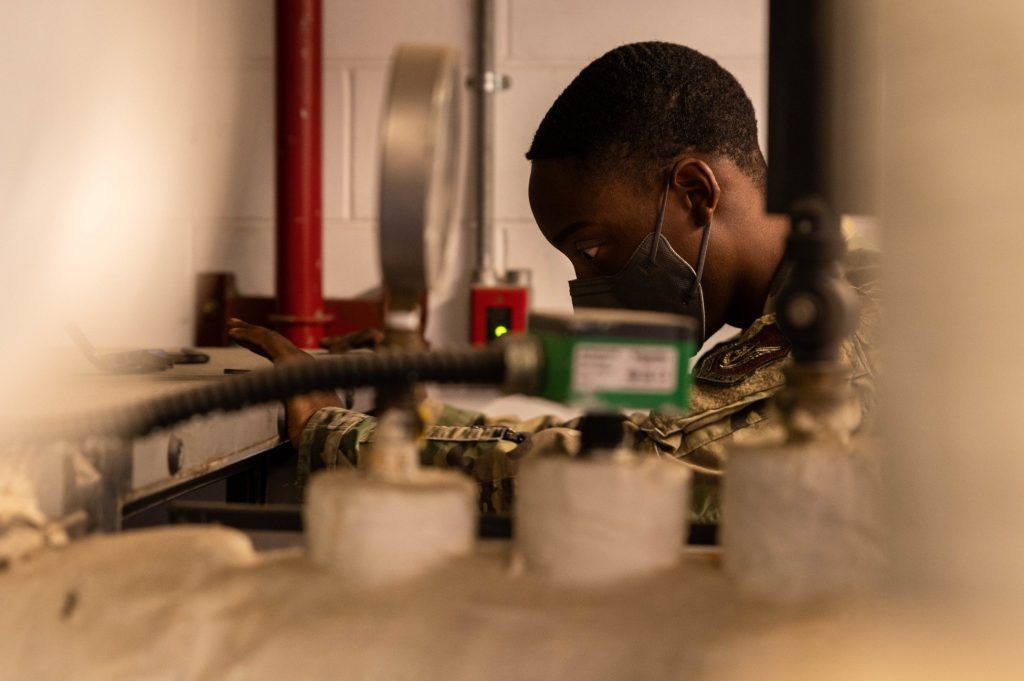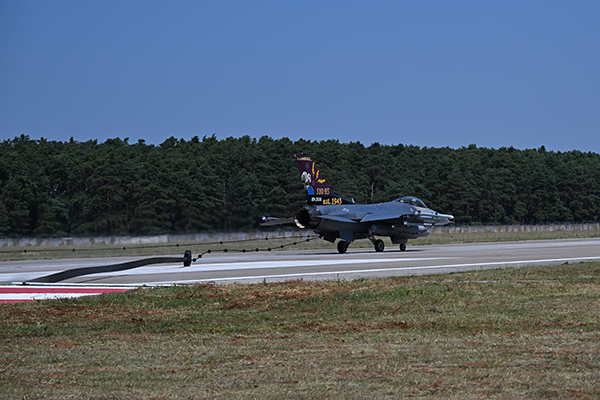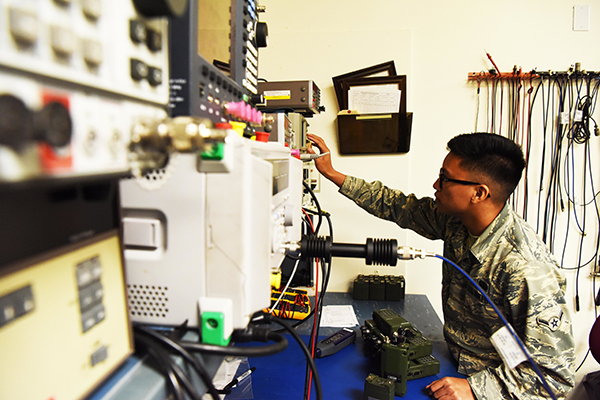By Brig. Gen. Brian Hartless, M.SAME, USAF, and Lt. Col. Gregory Hammond, Ph.D., P.E., M.SAME, USAF
For the Department of the Air Force, readiness and lethality depend on a network of resilient installations that enable advanced-generation multi-domain operations. While air and space power undeniably originate from physical installations, the reality is that this force projection is underpinned by aging infrastructure. As a result, infrastructure risk management is fundamental to America’s combat capabilities.
In the current environment of strategic competition, infrastructure risk now is being expanded to additionally address climate, cyber, and kinetic threats. Airmen engineers will need the support of the A/E/C industry to out-compete the threats.
In 2019, the Department of the Air Force released its Infrastructure Investment Strategy (I2S) to address the increasing infrastructure risk at its installations. I2S is focused on reducing infrastructure risks with adaptive, resilient, right-sized, and fiscally sustainable infrastructure. However, in the intervening three years, the strategic environment has changed. The conflict in Afghanistan has ended; Russia has invaded Ukraine; and China has emerged as the Defense Department’s most consequential strategic competitor. These events have brought us to today, where the top priorities for the Department of the Air Force are “China, China, and China” to ensure that air and space power can continue to safeguard U.S. national interests. Despite this pivot, I2S continues to serve as the foundation for airmen engineers as they manage infrastructure risk, even as their focus expands. Success in strategic competition depends on unity of purpose between airmen engineers and the A/E/C industry.
To understand how to address infrastructure risk in this era of strategic competition, we first need to focus on how the Department of the Air Force has historically defined infrastructure risk and how it uses I2S to manage that risk. Second, we must understand how the emergence of China as a pacing challenge has expanded infrastructure risk requirements. Lastly, we need to evaluate how airmen engineers are using I2S to tackle these challenges.

in the Indo-Pacific. U.S. AIR FORCE PHOTO BY AIRMAN 1ST CLASS CESAR J. NAVARRO
UNDERSTANDING RISK
Infrastructure across the Department of the Air Force exists to enable air and space power missions. For decades, air and space power has provided safety to the nation; indeed, the current generation of airmen engineers has only known a world where the American homeland is a sanctuary. Even in the combat environments of Iraq and Afghanistan, the skies were safe.
When airmen engineers use the term “infrastructure risk,” it most often means a risk to air and space power missions because of inadequate infrastructure, such as deterioration due to age or insufficient maintenance and repair (and not a risk to air and space power missions because of the effects of multi-domain attacks on infrastructure). This focus on condition and age is a byproduct of the asset management classification schema and was enabled by decades of air and space dominance.
Understanding that our standards and processes are not perfect, we seek industry feedback and dialogue on innovative approaches to manage our infrastructure as we tackle today’s national security threats. Numerous opportunities exist for collaboration.
The department’s asset management system and understanding of infrastructure risk begins at the component level, with building components such as doors, windows, HVAC chillers, and fire alarm panels. Engineers inspect each component regularly to produce over 1.6 million component condition indexes, which are stored and monitored within asset management systems BUILDER and PAVER. Engineers are able to forecast asset degradation and prioritize the assets for repair or replacement based on the asset’s relative importance at the installation and its current health. Managing and minimizing infrastructure risk has been a function of applying asset management to infrastructure (that is, a mission-based, lifecycle-cost approach).
I2S codified the department’s approach to asset management. Consisting of three lines of effort, the strategy first directs airmen engineers to sustain air and space base readiness, which are critical power projection platforms in the missions of “fly, fight, and win” and “global space operations.” Second, the strategy defines the means to improve the infrastructure portfolio’s cost-effectiveness. Lastly, I2S focuses on innovation to enhance installation management. By changing its asset management practices and increasing the infrastructure budget, I2S provides a means to significantly improve the condition of 181 installations and $458.2 billion in infrastructure.
STRATEGIC PIVOT
The Department of the Air Force has followed the fundamental principles of asset management embedded in I2S to manage its infrastructure risk and has prioritized infrastructure repair and modernization on the component (or building) condition and the asset’s relative importance. However, this framework is being transformed under the changing strategic environment.
Success in strategic competition depends on unity of purpose between airmen engineers and the A/E/C industry.
Strategic guidance documents (National Security Strategy, National Defense Strategy, and Operational Imperatives) inform airmen engineers that the homeland is no longer a sanctuary and they must be ready to defend it from multi-domain attacks. Consistent with this guidance, infrastructure risk management is being expanded to address climate, cyber, and kinetic threat risks.
To counter an assertive China, the Secretary of the Air Force established seven operational imperatives to change the department’s posture, with infrastructure prominent in two imperatives. Long-range fires will put air bases at risk in a conflict with China or Russia, and they will no longer be sanctuaries. As a result, one of the imperatives will counter this threat by strengthening the resiliency of air bases, their sustainment, and communications. Furthermore, the department cannot assume that our adversaries will give us notice to mobilize. Another imperative will improve our ability to transition from a peacetime to war-time posture by countering anticipated cyber threats to computer systems and industrial control systems. These imperatives are allowing airmen engineers to reexamine what holistic infrastructure risk means.

EMPOWERING ENGINEERS
While the character of the engineering mission may be changing with the emergence of China as a strategic competitor, the nature of our engineering has not. Installations will continue to be built, maintained, and recovered by airmen engineers. It will be done using asset management principles executed by agile, innovative, and ready airmen engineers, underpinned by the I2S.
Consistent with this guidance, infrastructure risk management is being
expanded to address climate, cyber, and kinetic threat risks.
In the coming years, airmen engineers will take a leading role in constructing passive defense measures to enable the Air Force’s scheme of maneuver and mitigate the growing threat of Chinese missiles at air bases across the Indo-Pacific. They will reduce control system vulnerabilities while continuing to minimize the impact of failing facilities across the enterprise.
I2S empowers airmen engineers to look critically at standards, processes, and capabilities to identify areas for improvement as they manage full-spectrum infrastructure risk. Recent successes include both the new risk-based hangar fire suppression system standard and the new enterprise facility footprint growth policy designed to cap growth. However, we still have work to do as our installations and air and space power projection platforms continue to erode. Multi-domain threats are driving new vulnerabilities. Airmen engineers have to mitigate infrastructure failures and enable air and space bases as power projection platforms.
COLLABORATION OPPORTUNITIES
We will need the help of industry as we continue executing I2S and implementing asset management across the U.S. Air Force and U.S. Space Force. Understanding that our standards and processes are not perfect, we seek industry feedback and dialogue on innovative approaches to manage our infrastructure as we tackle today’s national security threats. Numerous opportunities exist for collaboration.
- The Department of the Air Force’s method to update the condition of assets is workforce intensive and occurs on a five-year cycle. How can the department better utilize technology to increase the frequency of data collection while doing it cost-effectively at scale?
- As we implement Executive Order 14057 on clean energy industries, we will construct net zero emission buildings and start inserting “buy clean material” clauses into contracts. How can the Department of the Air Force achieve these goals without driving up construction costs? Are there trade-offs we need to consider?
- How should the Department of the Air Force address the effects of climate change on its installations?
- How should we change our training to ensure industrial control systems cybersecurity is part of the ethos of every airman engineer?
- Are the construction standards in the Unified Facilities Criteria sufficient to protect infrastructure from long-range enemy fires?
- What new construction materials and techniques should be authorized to defend our infrastructure better?
- As the Department of the Air Force increases construction activities at remote locations in the Indo-Pacific, logistics lines will be stressed. Does industry have solutions to provide essential infrastructure services with a significantly reduced logistical footprint?
- What barriers have airmen engineers erected that prevent industry innovation from being considered for adoption and implementation?
Airmen engineers have always worked alongside industry to maintain and care for our infrastructure. As we respond now to the challenge of defending the homeland from China’s growing multi-domain threat, we will require industry’s support more than ever.
The views expressed in this paper are those of the authors and do not reflect the official policy or position of the United States Air Force, the Department of Defense, or the U.S. Government.
More News from TME
-

Construct, Catch, Train: Delivering Cradle-to-Grave European Theater Aircraft Arresting Systems
In preparation for a delivery of F-16 fighter aircraft to Malacky AB, the 435th Construction & Training Squadron completed the overseas repair of an aging aircraft arresting system, confronting timing challenges to complete the installation ahead of schedule. -

Embracing Modern Mass Communications Systems
Modern mass communication systems utilizing Internet Protocol-based adoption offer many benefits over legacy analog systems for military bases, including critical issues of security, functionality, and compliance to meet evolving expectations, standards, and safety requirements. -

Quantifying Risk Through Probabilistic Risk Assessments
Research conducted at the Air Force Institute of Technology tested the feasibility of using existing facility condition and work task data to quantify the risk of mission failure due to infrastructure limitations and subsequently use the assessment to inform future funding decisions.